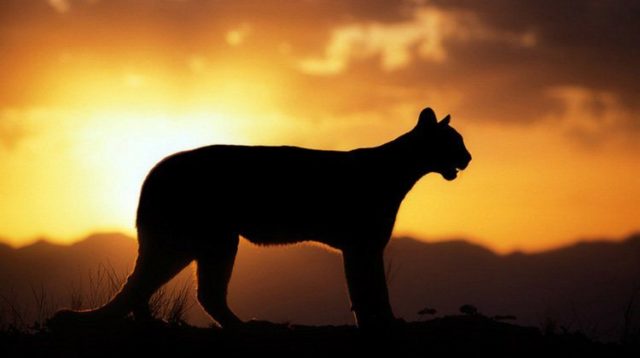
There’s a big mammalian predator said to roam the North Texas countryside. But this elusive killer is a ghost. Only the most fleeting of glimpses are ever allowed. Impossible to photograph, and mysterious in its habits and sign–this clever creature often mimics our more common varieties. I’m not talking about Bigfoot or Sasquatch… I’m talking about that OTHER crytpid–the long-tailed tawny one. I’ve been told with some adamancy, that they got ’em in the LBJ National Grasslands, and I wanted to check it out for myself.
In the scheme of things, the LBJ National Grasslands is not very urban. In fact, the rolling countryside of northern Wise County is about a rural as it gets. Nonetheless, the grasslands are located squarely within the self-imposed boundaries of this website’s coverage area, so that makes it fair game for a DFW Urban Wildlife trail camera survey in my book.
For those who are not familiar, the grasslands consist of 73 units of public land managed by the US Forest Service. The tracts are scattered all across north-central Wise country, and vary in size and terrain. Outdoor recreation is name of the game in the grasslands. Horseback riding, hiking, mountain biking, camping, fishing, and hunting are all popular activities here.
The grasslands abound with wildlife. White-tailed Deer, Feral Hogs, Coyotes, Bobcats, foxes, and other common North Texas small mammals can all be found here. Ducks, geese, Wild Turkey, Bobwhite Quail, and many other birds make use of the varied terrains. And, if my sources are correct, there may be another–less frequently documented–animal sharing the grasslands as well.
For this project, I gathered up some of my older trail cameras–still serviceable, but nearing retirement. Technology has passed these cameras by. They still trigger reliably, but as you will see, they lack in image quality. It was time to put them out to pasture, and I couldn’t think of a better last hurrah for these units than a long term survey of the grasslands in Wise County.
My plan was to scout out some remote, but highly trafficked game trails, and watch them with trail cameras for an extended period of time–nine months to be exact. Using this strategy, I was sure to capture many candid pictures of wildlife living in the grasslands. Who knows what else I might record?
In early February, I scraped and crawled into some of the more inaccessible parts of the grasslands in order to find prime locations for these sets. I carefully chose places that showed signs of an abundance of wildlife activity, while at the same time revealing a dearth of human intrusion. For the better part of a year my cameras watched over these remote and very busy game trails. Hundreds of photos were taken. The following is a sampling of shots that were recorded…
Location One
For this set I chose an intermittent pond located at the margin of a grassy prairie and a dense woodland. For much of the year, this would be an important watering hole in this particular part of the grasslands. The nature of the pond changed dramatically over the course of the year, though. Pay special attention to the way it grows and shrinks with the changing of the seasons.

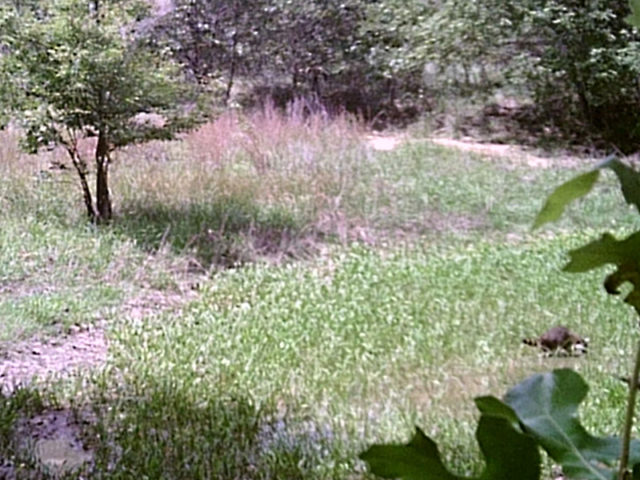
Note the hog wallow in the lower left of the picture.
Location Two
Here, I discovered a pinch point between dense vegetation and a deep cut ravine. If you wanted to get through this part of the forest, this was the place to make the transit. This was a very busy spot.

Note the cheek ruffs and striping on the front legs.
Click to enlarge
Location Three
Location three was a crossroads of sorts. A number of game trails intersected in this small clearing deep in the woods. This was easily the most active spot surveyed during this effort.
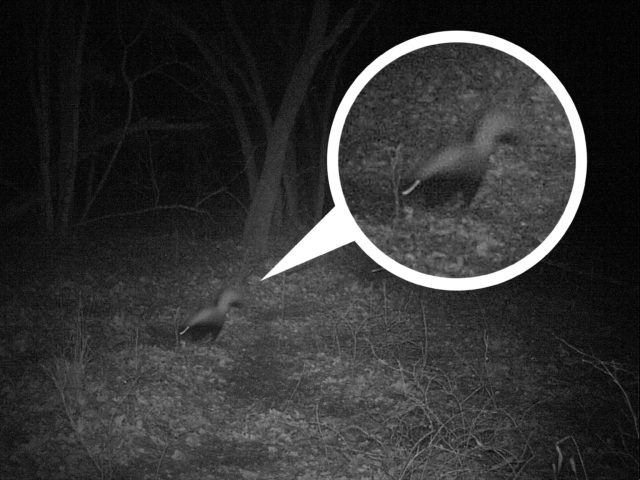
He visited in mid-February.
Click to enlarge
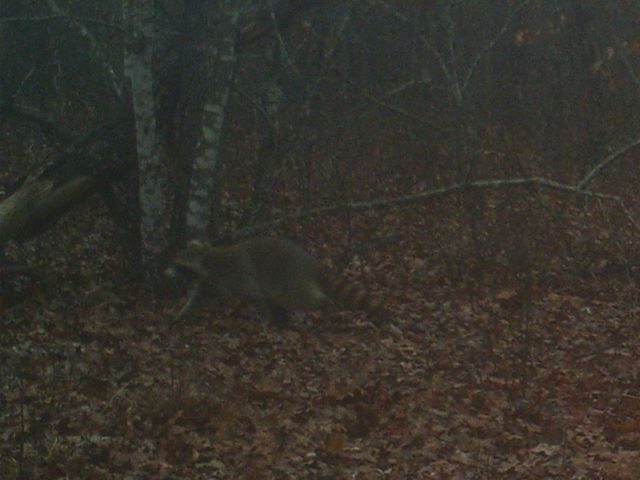
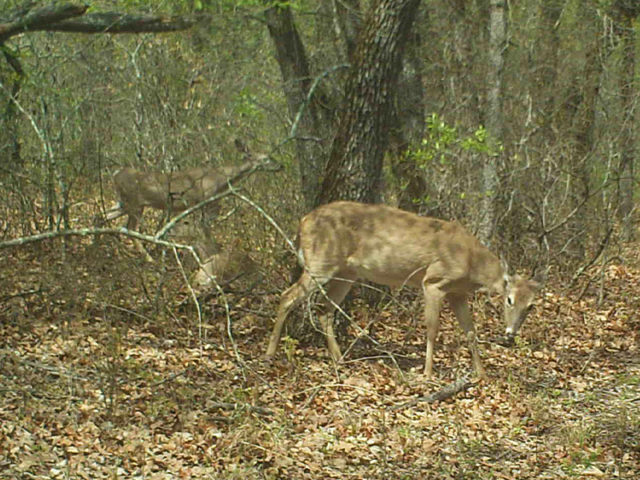
Can you find them all?
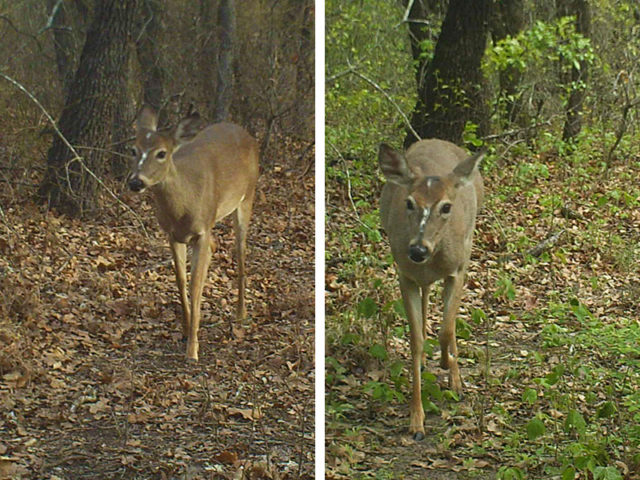
the distinctive white markings on her snout and forehead.
This is her in February (left) and again in May (right)
Location Four
This spot was surveyed from on high. I set my camera looking down onto a busy game trail running through a deep ravine. During times of heavy rain, this gully would certainly fill with water, swamping and washing away any vegetation that might grow there in the dry season. The resulting open ground made this cut a natural pathway for animals looking to avoid the green brier tangles in the forest above.
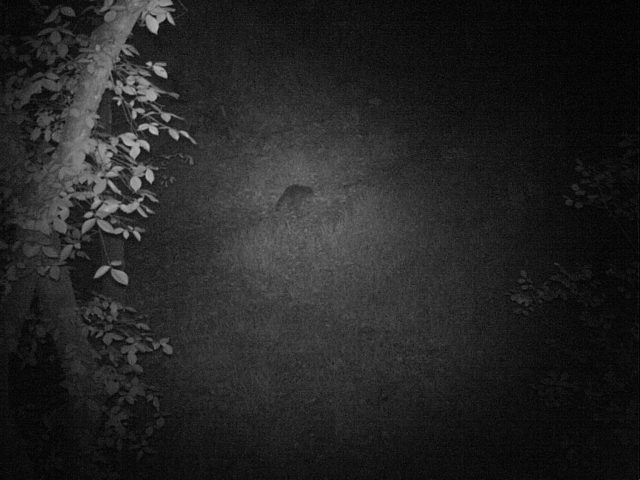
Click to enlarge
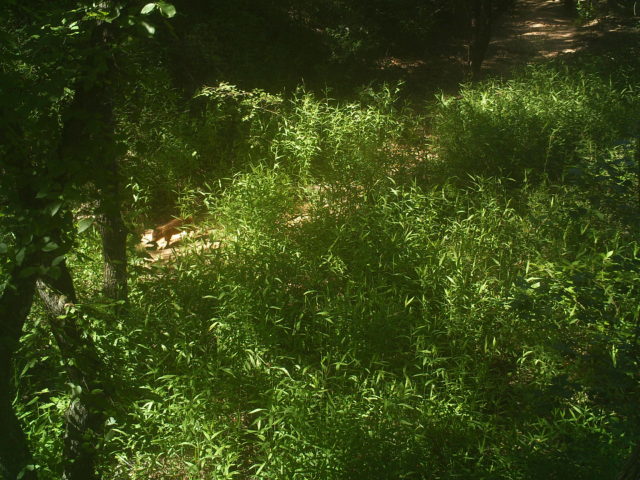
are hidden from view by the extensive vegetation growth.
Click to enlarge

As expected, a long term project like this one revealed much about the wildlife of the LBJ National Grasslands. All of the usual suspects were present and accounted for. But, in spite of constant surveillance for the better part of the year, nothing out of the ordinary was photographed.
So, this time around they don’t got ’em in the grasslands. Some of you may be surprised by this outcome, and other of you not so much. Maybe things will be different next time, there’s still a lot of grasslands to explore. Stay tuned!



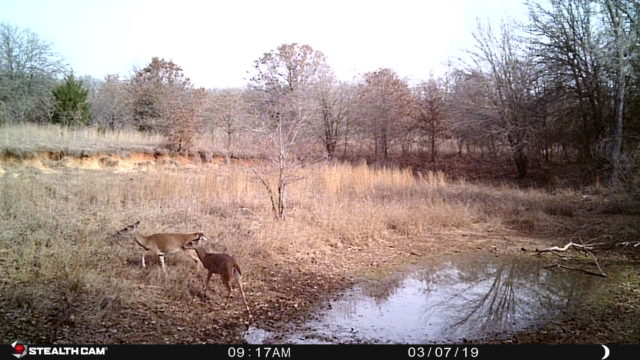
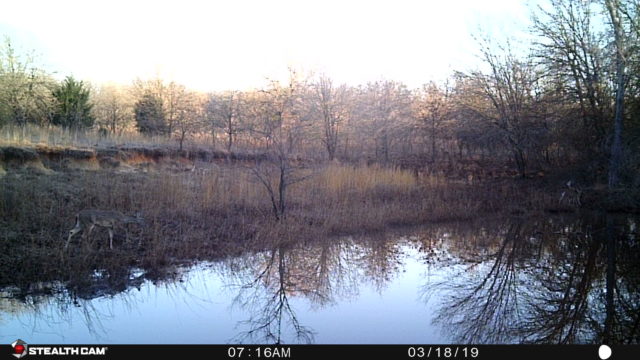
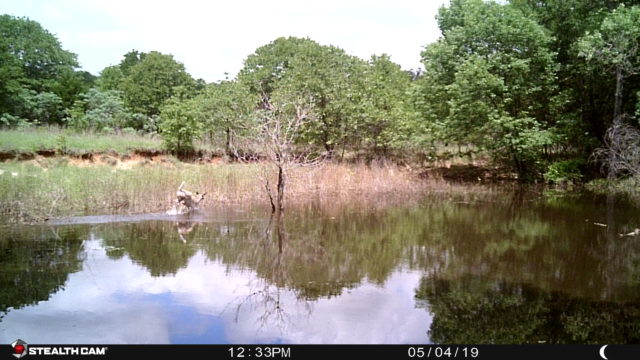
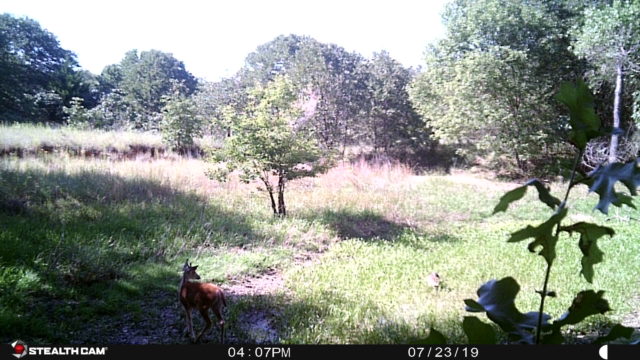
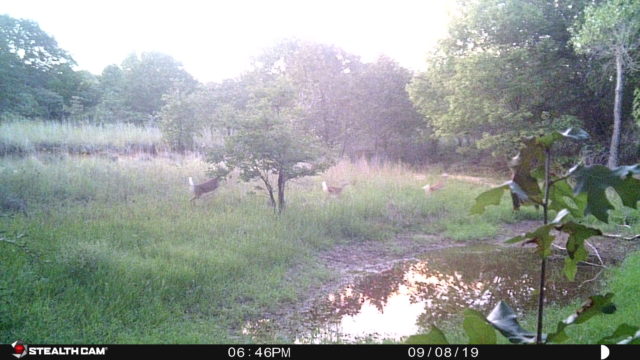
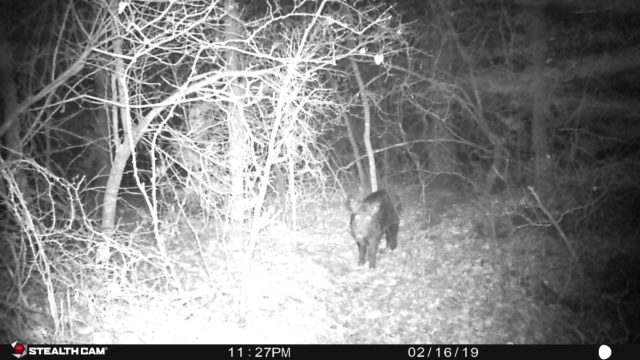
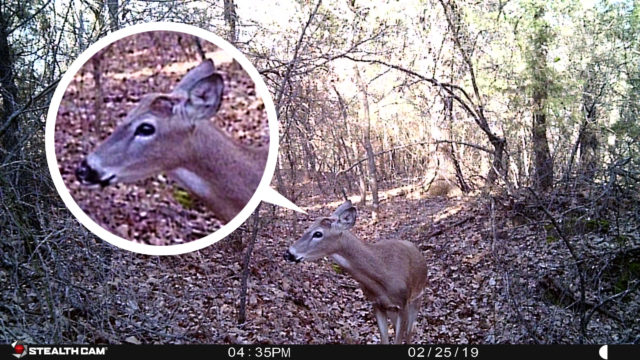
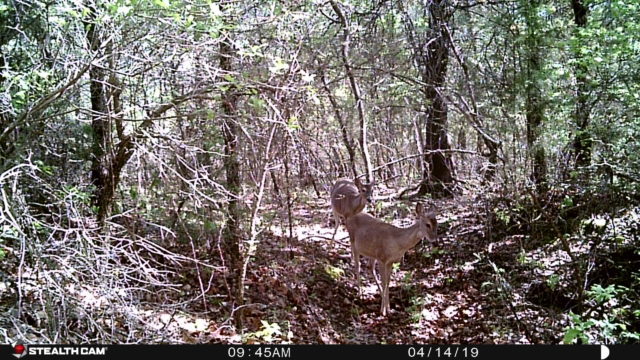
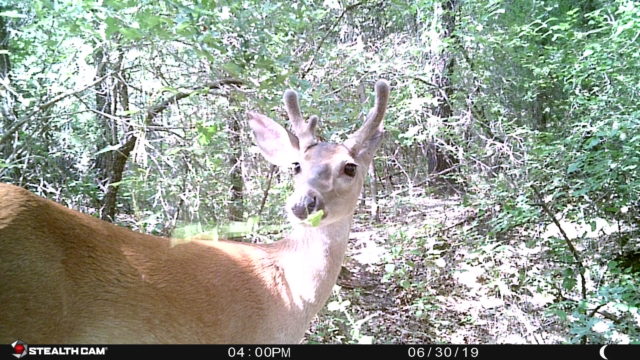
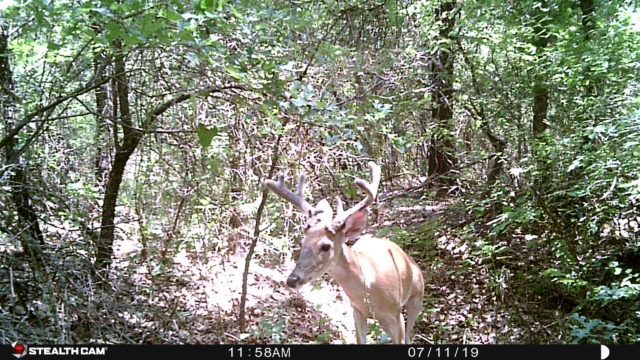
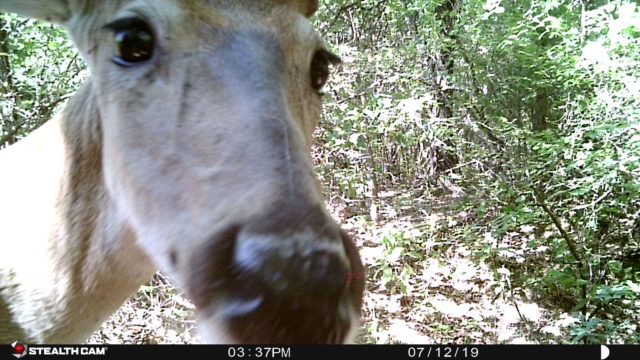
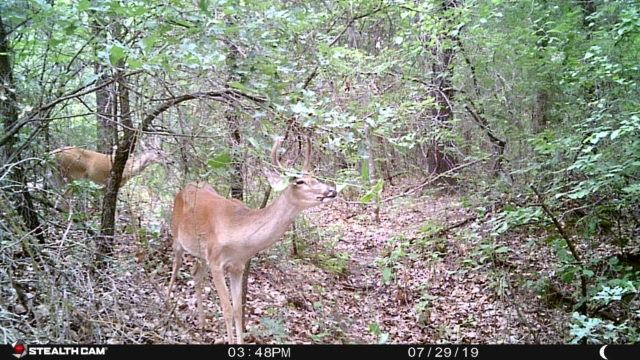
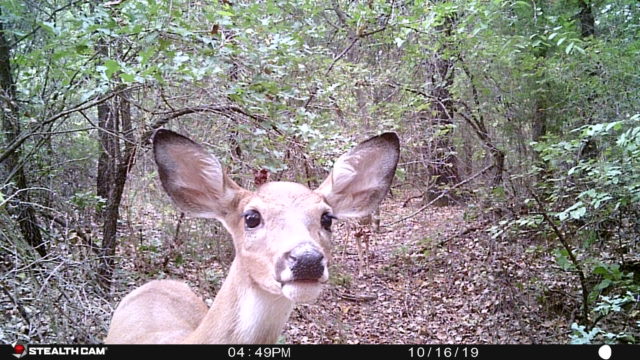
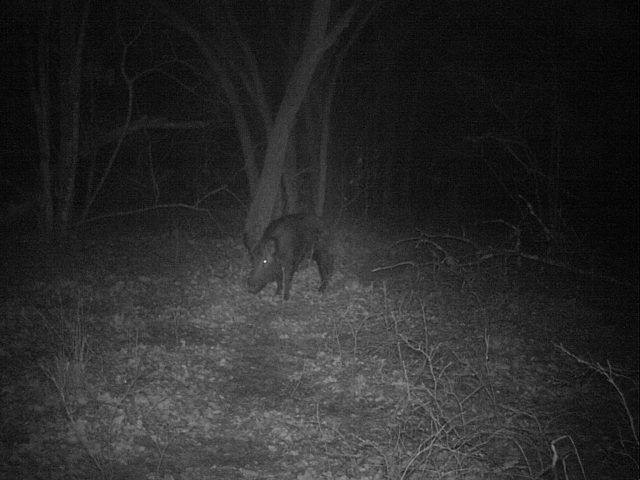
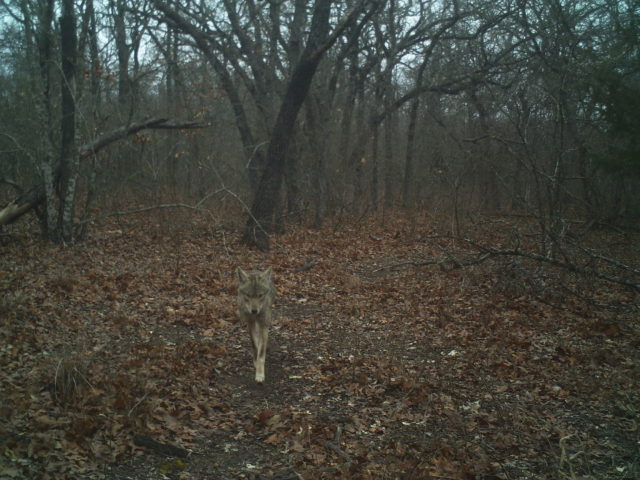
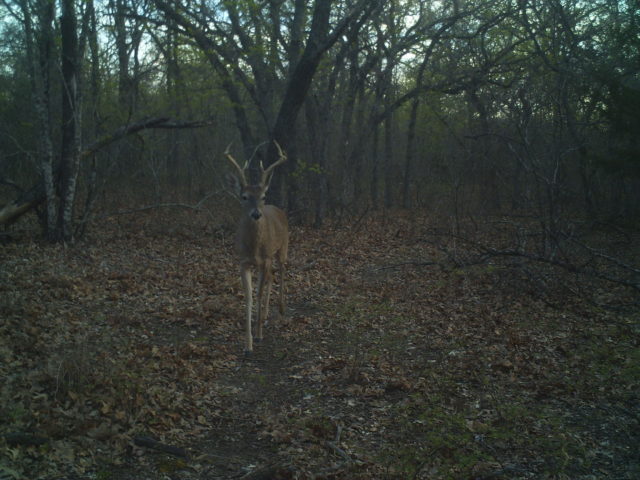
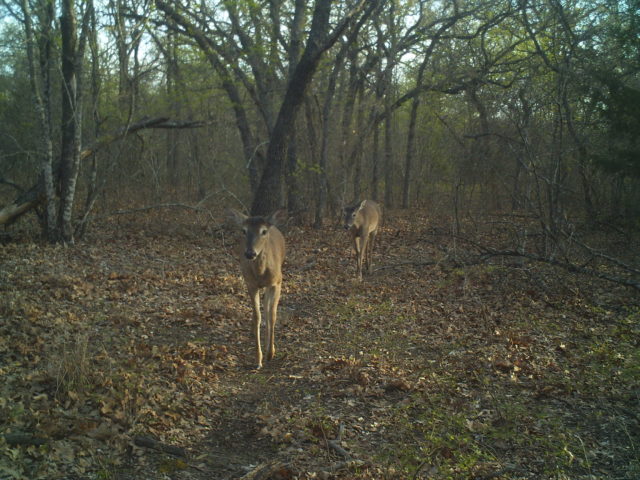
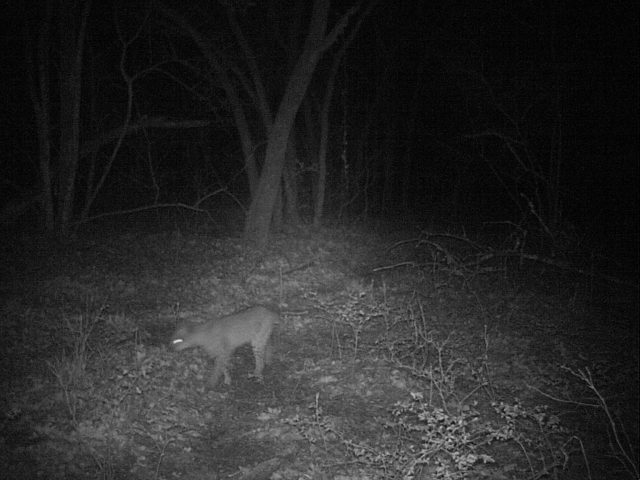
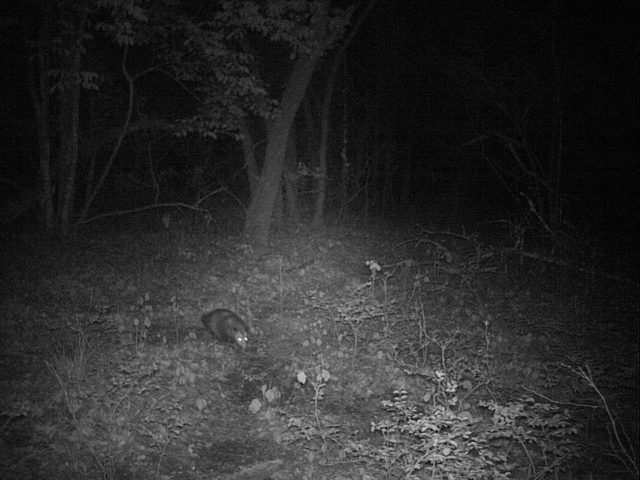

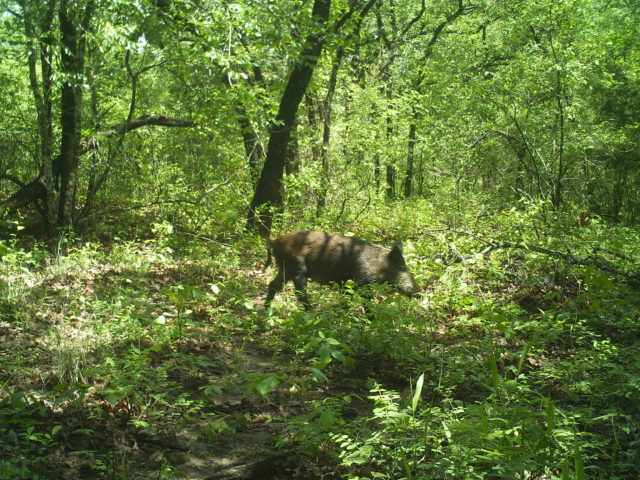
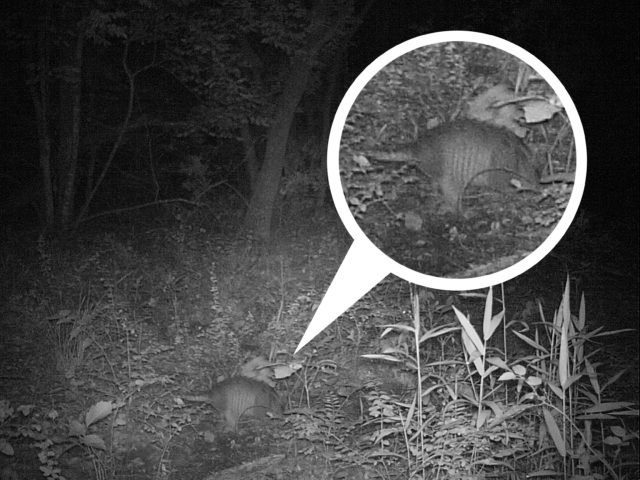

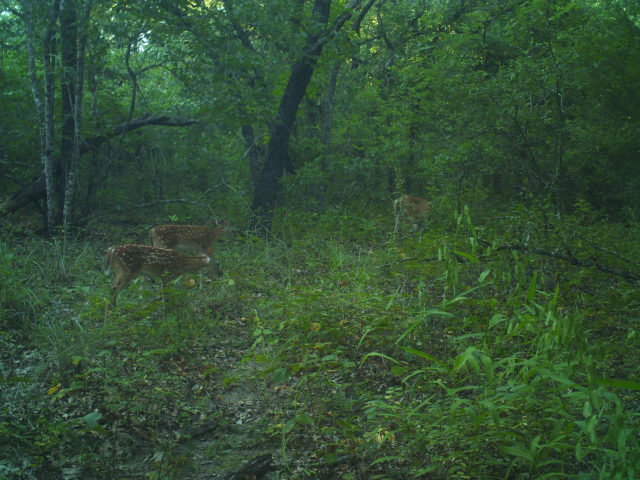
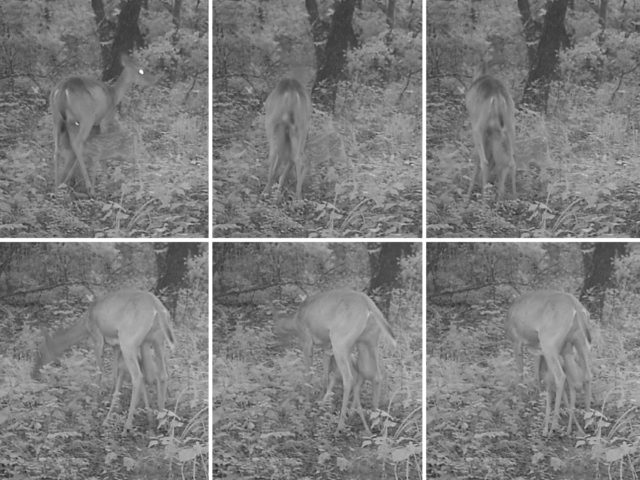


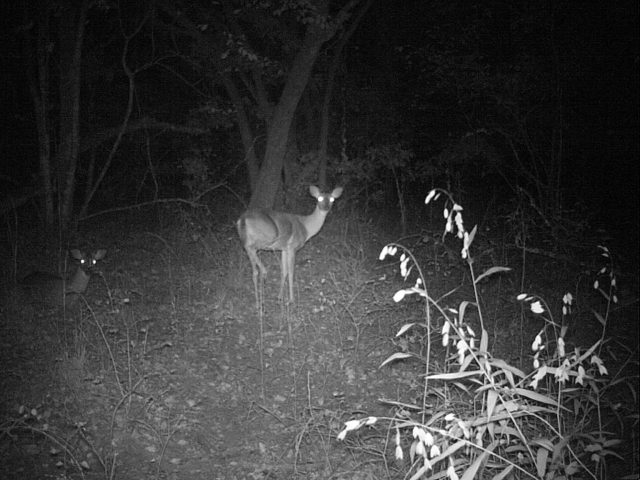

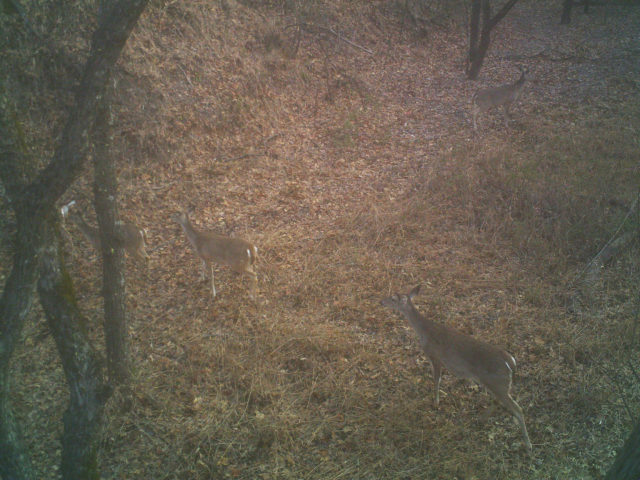
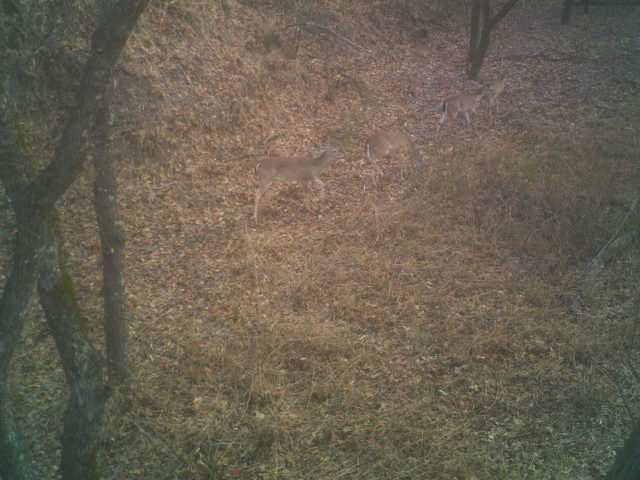

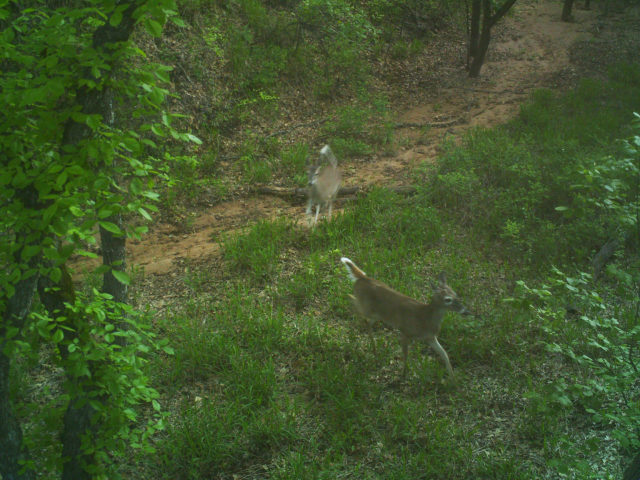
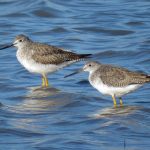
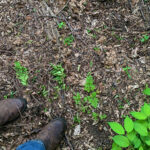


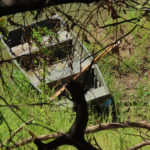
Hi Chris, This post may be old, I could find no date associated with it.
The LBJ National Grasslands was a favorite retreat for Bonnie and me when we lived in Denton in the early 1970s and again in the early 1990s, though my commuting between Denton and UT Brownsville left precious little time for recreational outdoor pleasures. I was a graduate student at UNT in the ’70s. Even back then, there were many who believed that cougars were present on the LBJ. Many of the same people believed that wolves inhabited that range as well. Of course, no realistic evidence
of either ever was noted. Coyotes were the basis for the wolf humors, and I believe that the cougar rumors were the result of some folks just “knowing” that they had to be there, given the perceived wildness of the terrain, especially to urban young folks.
I always enjoyed trips to the LBJ, and knowing that under USFS management, though still serving as grazing allotments, the terrain was recovering from past overgrazing and drought added to my appreciation. The terrain is more heavily wooded today than it likely originally was, though despite the name, Cross Timbers type vegetation is intermixed with the Grand Prairie.
Interesting that your photography yielded no wild turkeys. They were common there back when I was visiting.
David, this article is a few years old. I too love the grasslands, and wish I could visit more often. I have never seen Turkey there myself, but I understand that they are still present. There may be a lot of hunting pressure… I stay away during hunting season. I do plan to go back soon and repeat the effort described in the article… maybe later this winter!